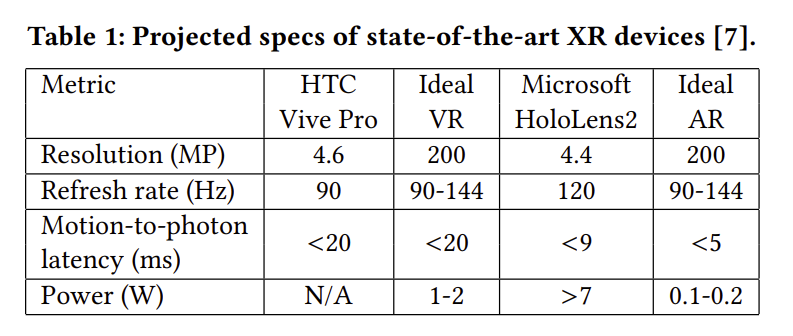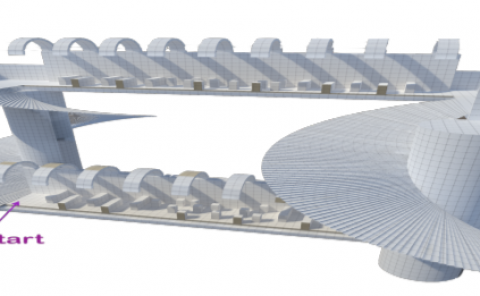Memory-Oriented Design-Space Exploration of Edge-AI Hardware for XR Applications
PubDate: Mar 2023
Teams: Indian Institute of Technology Delhi, 2Meta Reality Labs Research
Writers: Vivek Parmar, Syed Shakib Sarwar, Ziyun Li, Hsien-Hsin S. Lee, Barbara De Salvo, Manan Suri
PDF: Memory-Oriented Design-Space Exploration of Edge-AI Hardware for XR Applications

Abstract
Low-Power Edge-AI capabilities are essential for on-device extended reality (XR) applications to support the vision of Metaverse. In this work, we investigate two representative XR workloads: (i) Hand detection and (ii) Eye segmentation, for hardware design space exploration. For both applications, we train deep neural networks and analyze the impact of quantization and hardware specific bottlenecks. Through simulations, we evaluate a CPU and two systolic inference accelerator implementations. Next, we compare these hardware solutions with advanced technology nodes. The impact of integrating state-of-the-art emerging non-volatile memory technology (STT/SOT/VGSOT MRAM) into the XR-AI inference pipeline is evaluated. We found that significant energy benefits (>=24%) can be achieved for hand detection (IPS=10) and eye segmentation (IPS=0.1) by introducing non-volatile memory in the memory hierarchy for designs at 7nm node while meeting minimum IPS (inference per second). Moreover, we can realize substantial reduction in area (>=30%) owing to the small form factor of MRAM compared to traditional SRAM.



